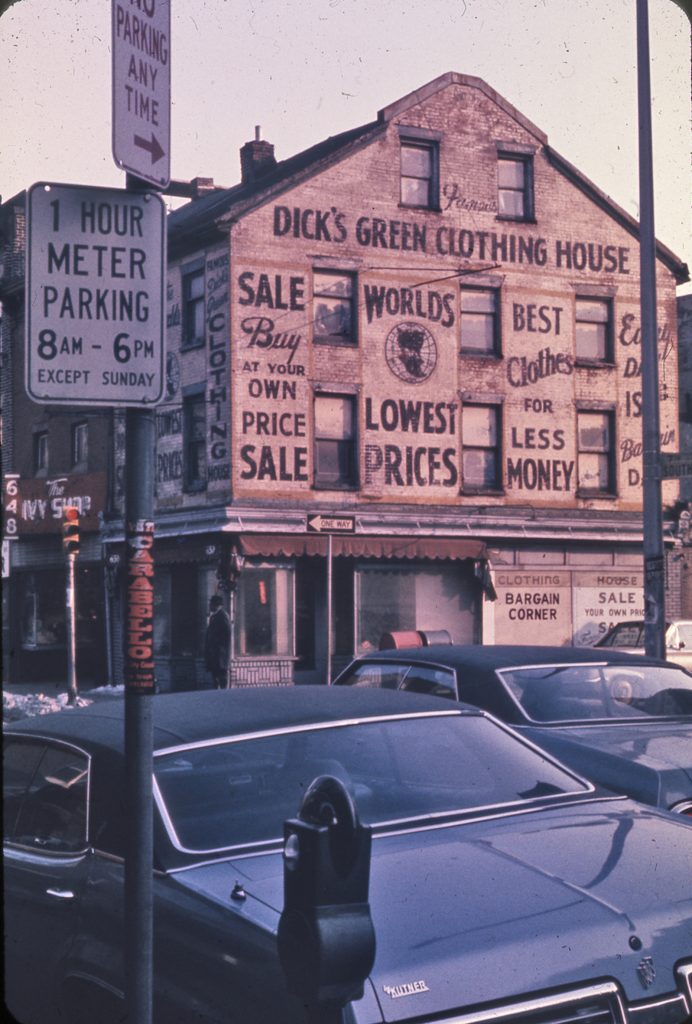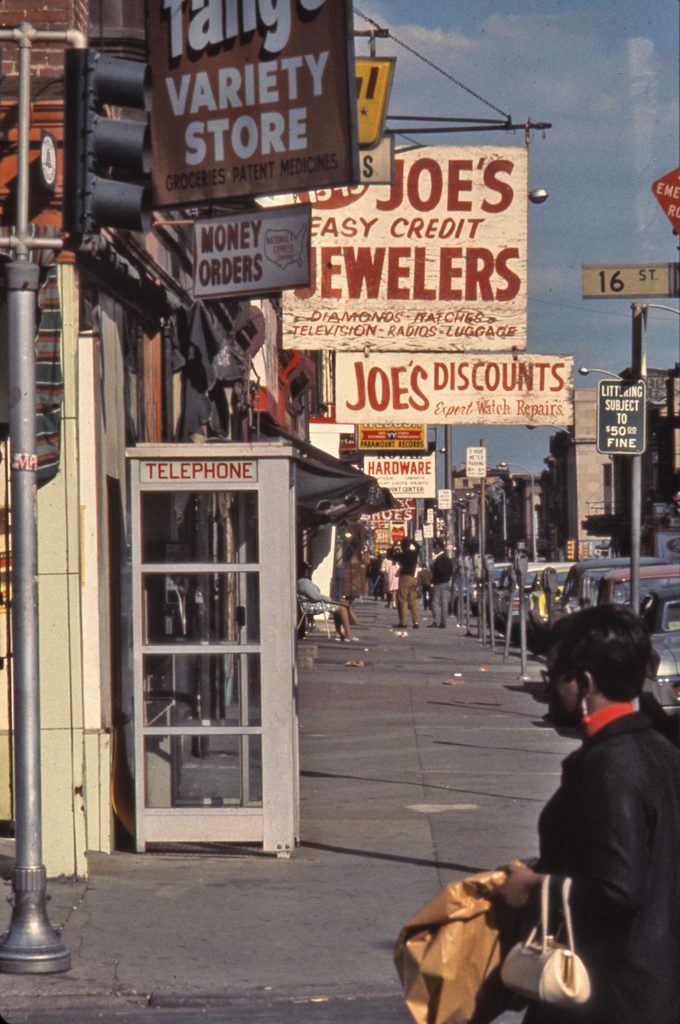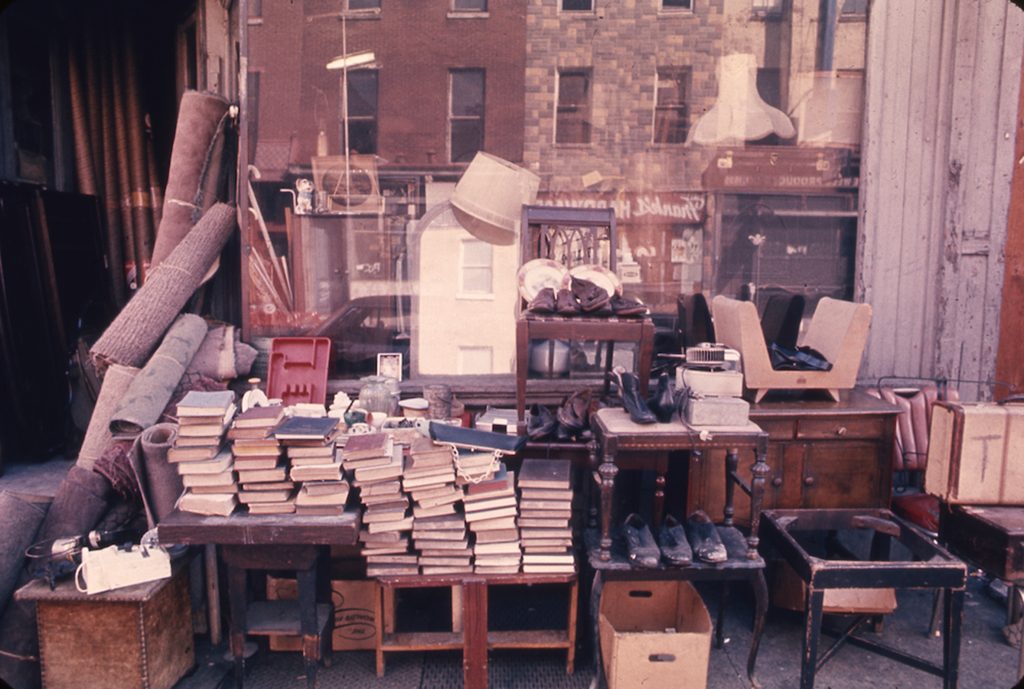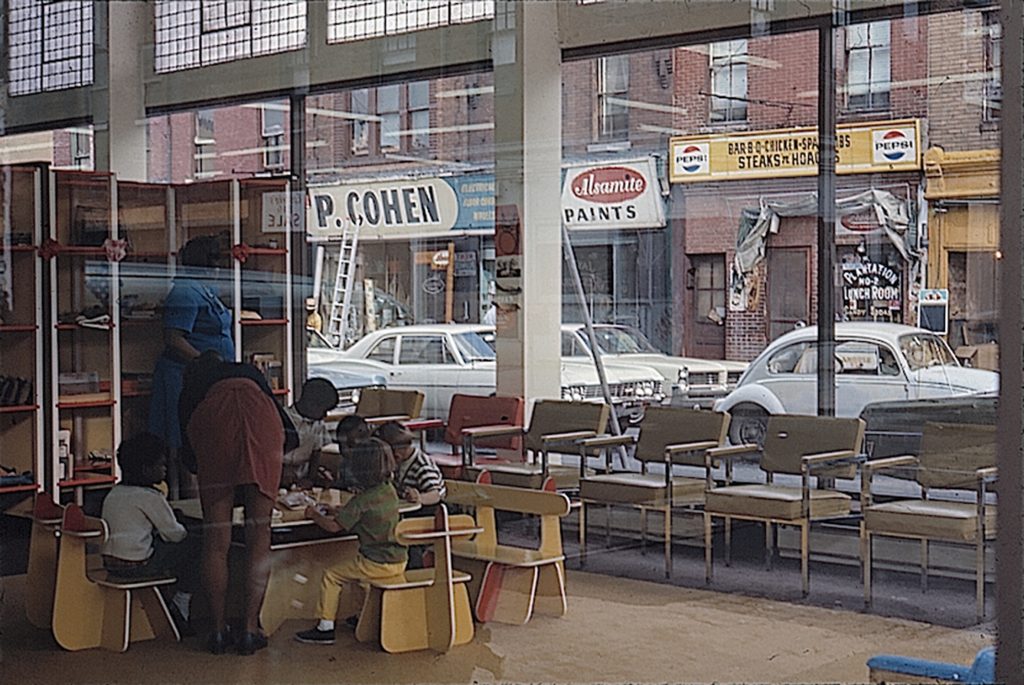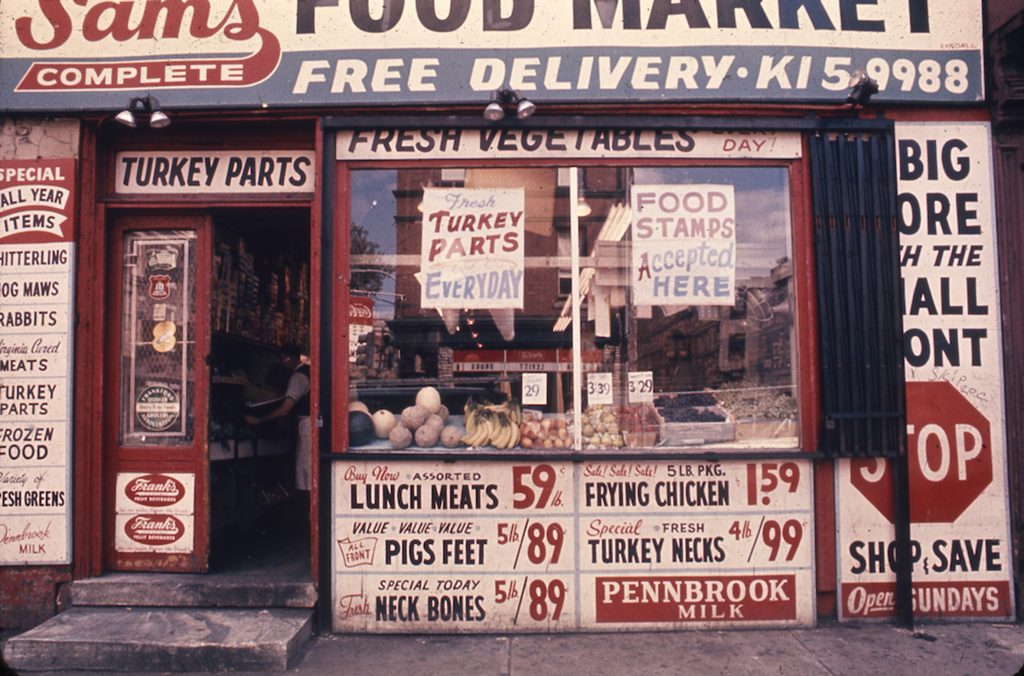This article is part of the [Sí], a personal project curated by Marta López García where she wills to shed light on a twice silenced reality. The goal remains to recover and spread pieces of architecture displaced to the periphery; although this time focused on the work of female architects.
Este artículo es parte de la serie [Sí] , comisariada por Marta López García que busca ofrecer una vision sobre una realidad doblemente silenciada. El objetivo es recuperar y difundir obras de arquitectura que han sido desplazadas a la periferia, teniendo como punto de partida proyectos de mujeres arquitectas.
In Philadelphia, as in many North American cities, plans for urban redevelopment were introduced after World War II. The proposal for the Crosstown Expressway, a highway that creates a loop around the area defined as the city centre, was shown under the supervision of the city´s planning director Edmund Bacon as part of the Better Philadelphia Exhibition in 1947.
En Filadelfia, como en muchas otras ciudades norteamericanas, planes de regeneración urbana fueron introducidos tras la Segunda Guerra Mundial. La propuesta del Crosstown Expressway, una autopista de circunvalación alrededor del área definida como el centro urbano, estaba incluida en la exposición de 1947 Una Mejor Filadelfia supervisada por Edmund Bacon, el director de Planeamiento de la cuidad.
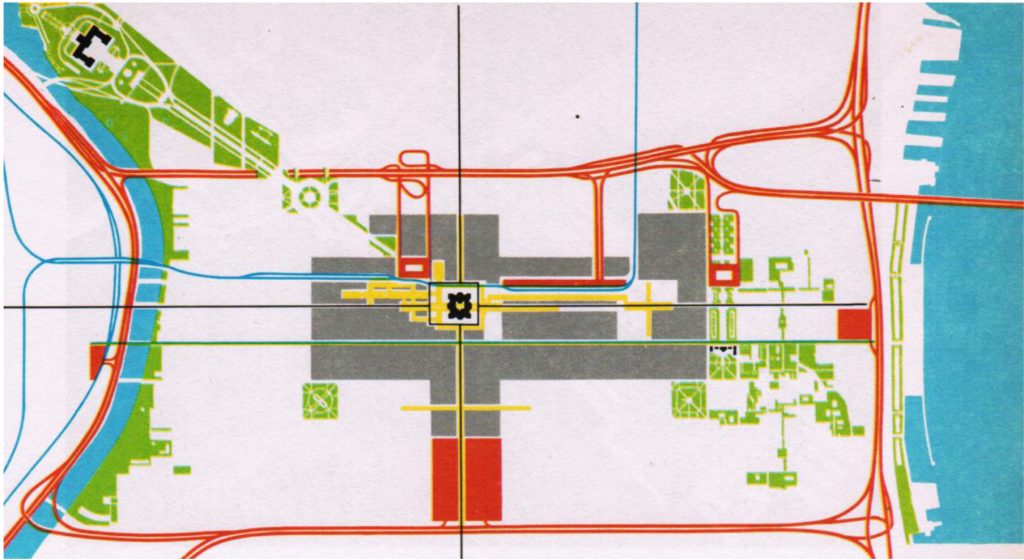
It was not until 1955 when South Street started to be seriously under threat, when the Crosstown Expressway plan was officially proposed. This included the demolition of the street which was at the time a run-down but active commercial area and the hearth of the Africa-American community in the city. In 1967 the Pennsylvania Department started approaching landlords in South Street to initiate negotiations to acquire the properties. As a result, a discussion was set regarding the lack of relocation solutions and the racial debate was also opened. It was then when a citizens committee was formed.
El plan del Crosstown Expressway fue anunciado oficialmente en 1955 trayendo consigo una seria amenaza para South Street (la Calle Sur). La propuesta incluía la demolición de la calle que, a pesar de su estado decadente, era una activa y multicultural vía comercial y el corazón de la comunidad afroamericana en Filadelfia. En 1967 el Departamento de Pensilvania inició una ronda de contactos con los propietarios de los edificios con la intención de adquirir las propiedades, lo que desencadenó una discusión sobre la falta de soluciones para realojar a los ciudadanos afectados e inició el debate racial.
“At this point (early in 1968) Venturi and Rauch were approached by an advisor to the Committee who said, “If you can like Las Vegas Strip, we trust you not to try to neaten up South Street at the expense of its occupants.” We were to be architects and planners to the Citizens’ Committee, under contract but without fee, to plan for the Crosstown Community, as represented by the Citizens’ Committee to Preserve and Develop the Crosstown Community (CCPDCC), and help present its case to the public and to governmental and private agencies whose decisions affected the community, notably, the Highway Department, the City Planning Commission, and the Chamber of Commerce.” (Extract from project description, www.venturiscottbrown.org)
“En este punto (a principios de 1968) un asesor del Comité nos contactó a ´Venturi y Rauch´ y nos dijo, “si os gusta el Strip de Las Vegas, confiamos en que no vais a intentar pulir South Street a expensas de sus ocupantes.” Nuestro papel era el de arquitectos y planeadores a servicio del Comité de Ciudadanos, con contrato pero sin honorarios, para trazar un plan para la Comunidad del Crosstown, representada por el Comité de Ciudadanos para Preservar y Desarrollar la Comunidad del Crosstown (CCPDSS) y ayudar a presentar su caso al público y a las organizaciones gubernamentales y agencias privadas cuya decisión afectaba a la comunidad, principalmente al Departamento de Transporte, la Comisión de Planeamiento Urbano, y la Cámara de Comercio. (Extracto de la descripción del proyecto, www.venturiscottbrown.org)

The Philadelphia Crosstown Community was the first community project for Denise Scott Brown and Robert Venturi and the first they did as practitioners not academics. It happened when she was teaching Planning at the University of Pennsylvania and at the same time they were doing their research in Las Vegas.
La Comunidad del Crosstown de Filadelfia fue el primer proyecto comunitario de Denise Scott Brown y Robert Venturi y el primero que hicieron como profesionales. Sucedió al mismo tiempo que ella enseñaba Planeamiento Urbano en la Universidad de Pensilvania y a la vez que ambos realizaban el estudio de sobre Las Vegas.
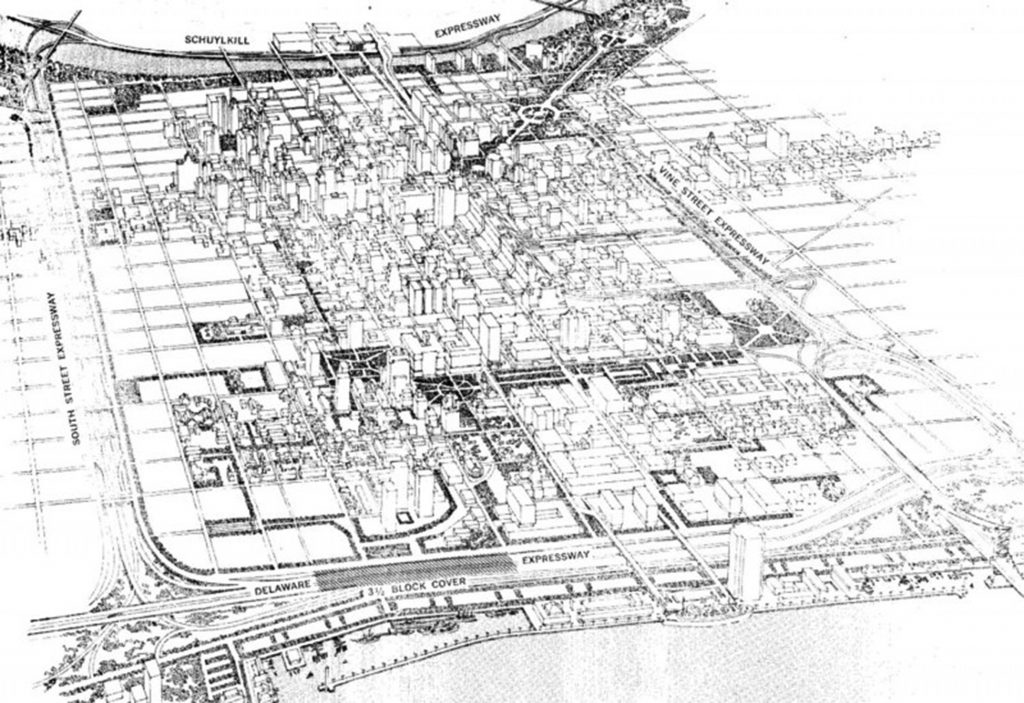
“The expressway threatened 6,000 mainly poor people for whom there was no public housing. The social planners felt the community needed to present its own plan and image for what South Street could be without an expressway.”
“La autovía amenazaba a unas 6000 personas, la mayoría pobres, para las que no había vivienda pública. Los trabajadores sociales sentían que la comunidad necesitaba presentar su propio plan mostrando lo que South Street podía ser sin la autovía.”
“We set about studying its many facets. We learned that South Street retailers could never again depend solely on a local market for their goods and services and that, to save an old main street in a low-income city area, it is necessary to find new uses for its buildings, based on their location and the quality of their architecture. These uses should attract people to the area but should not induce revolutionary change that will displace residents and demolish neighbourhoods. (…) We found that effective planning for old inner-city communities involves regional economies, local economics, architecture, historic preservation, knowledge of transportation and construction, understanding of urban community structure, dynamics and familiarity with methods for achieving democratic consensus.”
“No pusimos en marcha y estudiamos sus muchas facetas. Aprendimos que los tenderos de la Calle Sur no podrían depender únicamente del mercado local para sus productos y servicios y que, para salvar una calle mayor envejecida en una zona de baja renta, es necesario encontrar nuevos usos para sus edificios, basados en su localización y en su calidad arquitectónica. Estos usos deberían atraer a gente a la zona, pero sin introducir un cambio radical que desplace a sus residentes y conlleve a la demolición de barrios. (…) Descubrimos que un planeamiento efectivo para comunidades envejecidas en el centro de las ciudades engloba a la economía regional y global, la arquitectura, el patrimonio, el conocimiento de la red de transporte y la construcción, el entendimiento de la estructura de la comunidad urbana, las dinámicas y la familiaridad con métodos para alcanzar consenso democrático.”
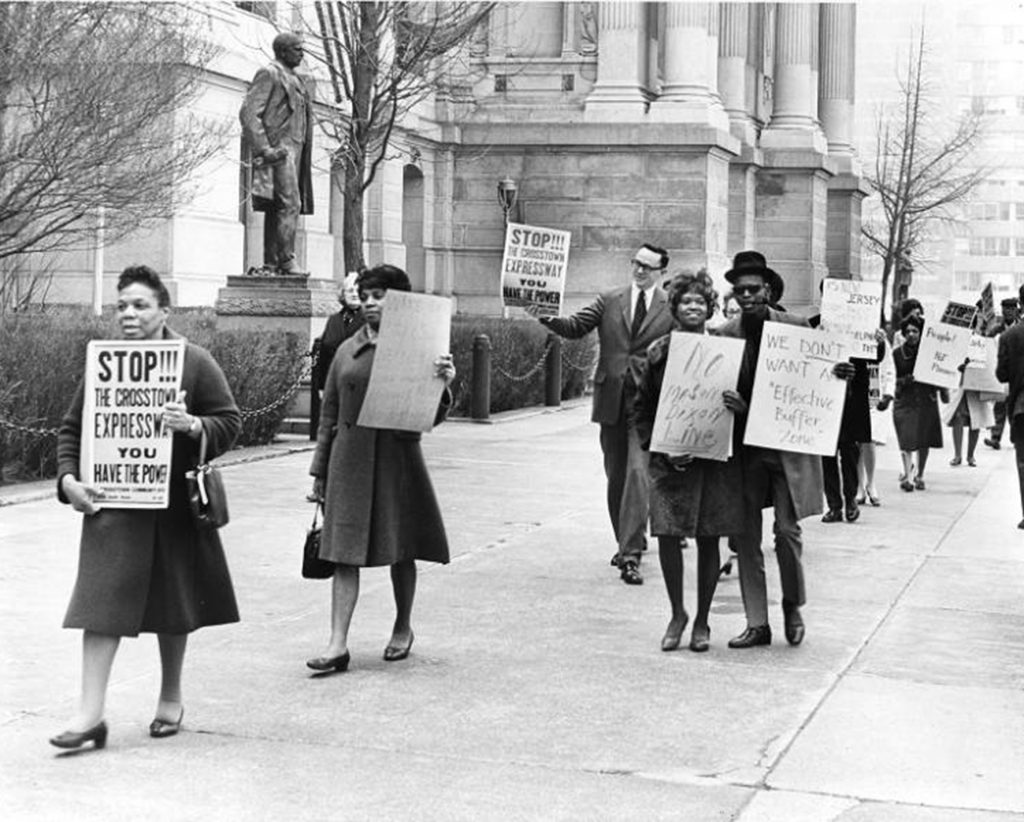
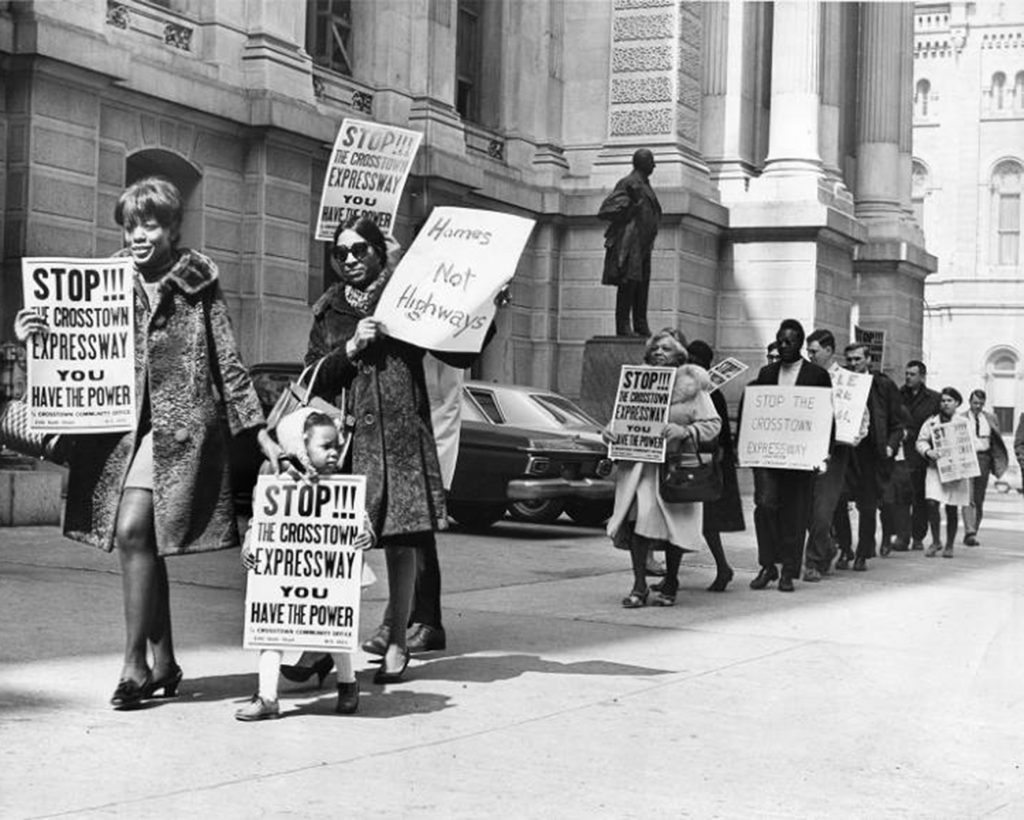
“The very first act, we suggested, should be to erect a banner over the street, paint one sign and rehabilitate one building, to show someone cares. This will be a quick beginning” (Denise Scott Brown, The Rise and Fall of Community Architecture*)
“Sugerimos que la primera acción fuese colocar una pancarta en la calle, pintar un letrero y rehabilitar un edificio, para demostrar su preocupación e interés. Esto será un comienzo rápido.” (Denise Scott Brown, The Rise and Fall of Community Architecture*)
The architects carried out a deep analysis of the area and by using photographs, sketches, diagrams and maps they highlighted the opportunities, the value of the vernacular and the right for people´s self-determination. Their work enabled the communication among the members of the community, the social planners and the planning officers. “The primary focus was on the rehabilitation of housing for low-income owners and renters, with corresponding neighbourhood improvements and with minimum relocation of households. Second came economic and social advancement through increase of local employment, local business ownership, and home ownership. The plan proposed placed control of local planning in community hands, enabled the community to receive income and profits from land development, and rehabilitated South Street as the ´strip center´ of a vital commercial, cultural, and civic life.” (Extract from project description, www.venturiscottbrown.org)
Los arquitectos realizaron un profundo análisis de la zona y mediante el uso de fotografías, dibujos, diagramas, croquis y mapas pusieron el foco en las oportunidades, el valor de los vernáculo y el derecho de autodeterminación de la gente. Su trabajo permitió la comunicación entre los miembros de la comunidad, los trabajadores sociales y los oficiales de planeamiento. “El foco principal estaba puesto en la rehabilitación de vivienda para propietarios e inquilinos con baja renta, con las correspondientes mejoras en el barrio y con el mínimo número de realojos. El segundo foco era la mejora económica y social a través del aumento del empleo local y la posesión de negocios y viviendas locales. La propuesta puso el control del planeamiento de la zona en las manos de la comunidad, permitiéndole recibir ingresos y beneficios de la promoción urbanística, y rehabilitó la Calle Sur como la ´franja central´ de una vida comercial, cultural y fundamental.” (Extracto de la descripción del proyecto, www.venturiscottbrown.org)
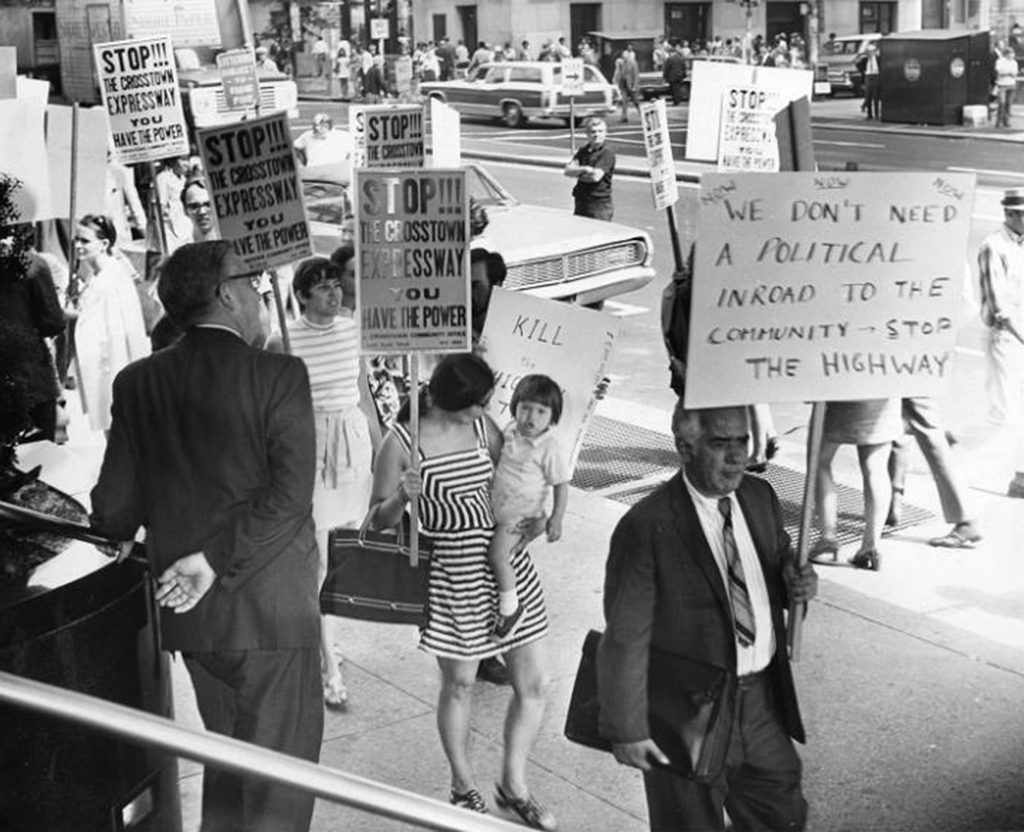
“Social planners accused architects and urban designers of bringing a ‘phisycal bias’ to urban planning, of trying to solve urban problems through planning streets and buildings, when often social or economic solutions would be more sustainable.” (Denise Scott Brown, Between Tree Stools*)
“Los trabajadores sociales acusaron a los arquitectos y urbanistas de introducir ´preferencias físicas´ en el planeamiento urbano, de intentar resolver problemas por medio de calles y edificios, cuando en muchas ocasiones soluciones económicas y sociales serían más sostenibles”. (Denise Scott Brown, Between Tree Stools*)
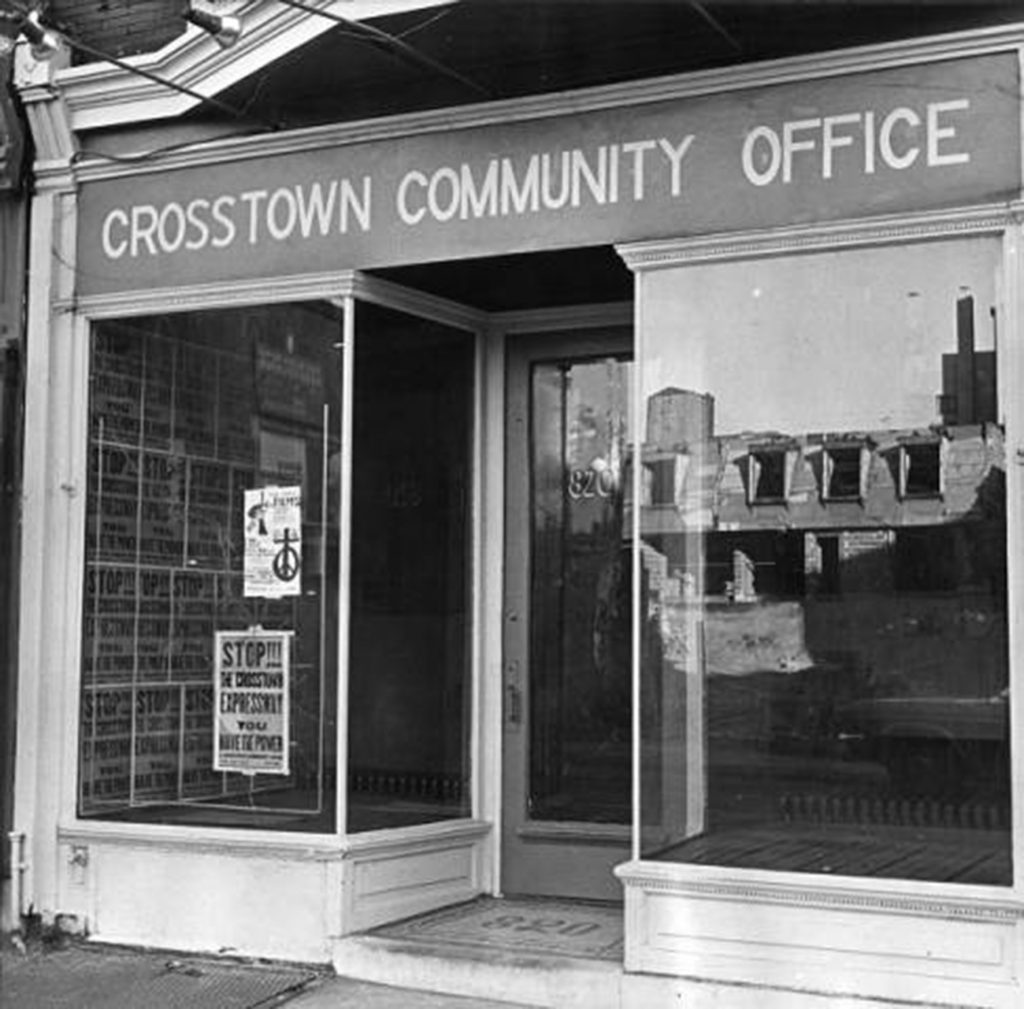
At the beginning of the 70’s changes were introduced in South Street generating the ‘South Street Renaissance´, being this movement one of the main drivers for the defeat of the Crosstown Expressway plan by popular protest in 1974.
La introducción de cambios en la Calle Sur a principios de los años 70 generó su renacimiento, conocido como el ´South Street Renaissance´, siendo este movimiento una de las claves principales de la derrota del plan del Crosstown Expressway por movilización popular en 1974.
* Both articles are included in Urban Concepts (see below). / Ambos artículos están incluidos en el libro Urban Concepts (ver abajo).
*Cover image: Photograph of South Street (1960’s), by Denise Scott Brown
Bibliography and Links:
- Clow, David. “House Divided: Philadelphia’s Controversial Crosstown Expressway”. 1989
- Haumann, Sebastian. “Vernacular Architecture as Self-Determination: Venturi, Scott Brown and the Controversy over Philadelphia’s Crosstown Expressway, 1967-1973.” 2009
- Scott Brown, Denise. Urban Concepts. Architectural design. 1990
- Scott Brown, Denise. Armada de palabras. Londres. AA Publications. 2011
- http://venturiscottbrown.org/pdfs/PhiladelphiaCrosstownCommunity01.pdf
- https://philadelphiaencyclopedia.org/archive/crosstown-expressway/
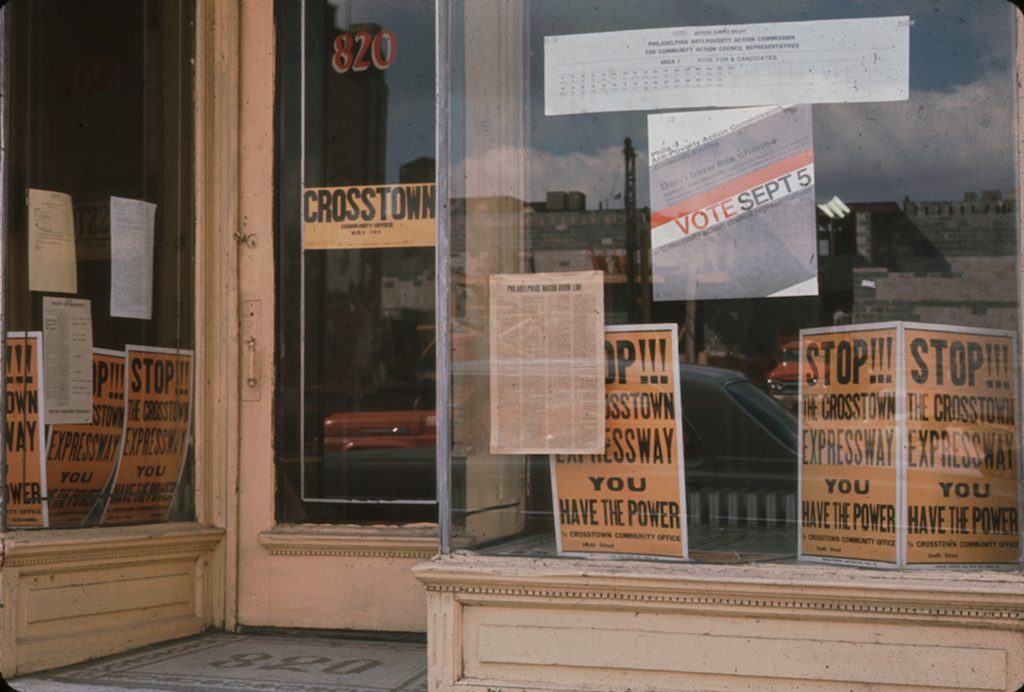
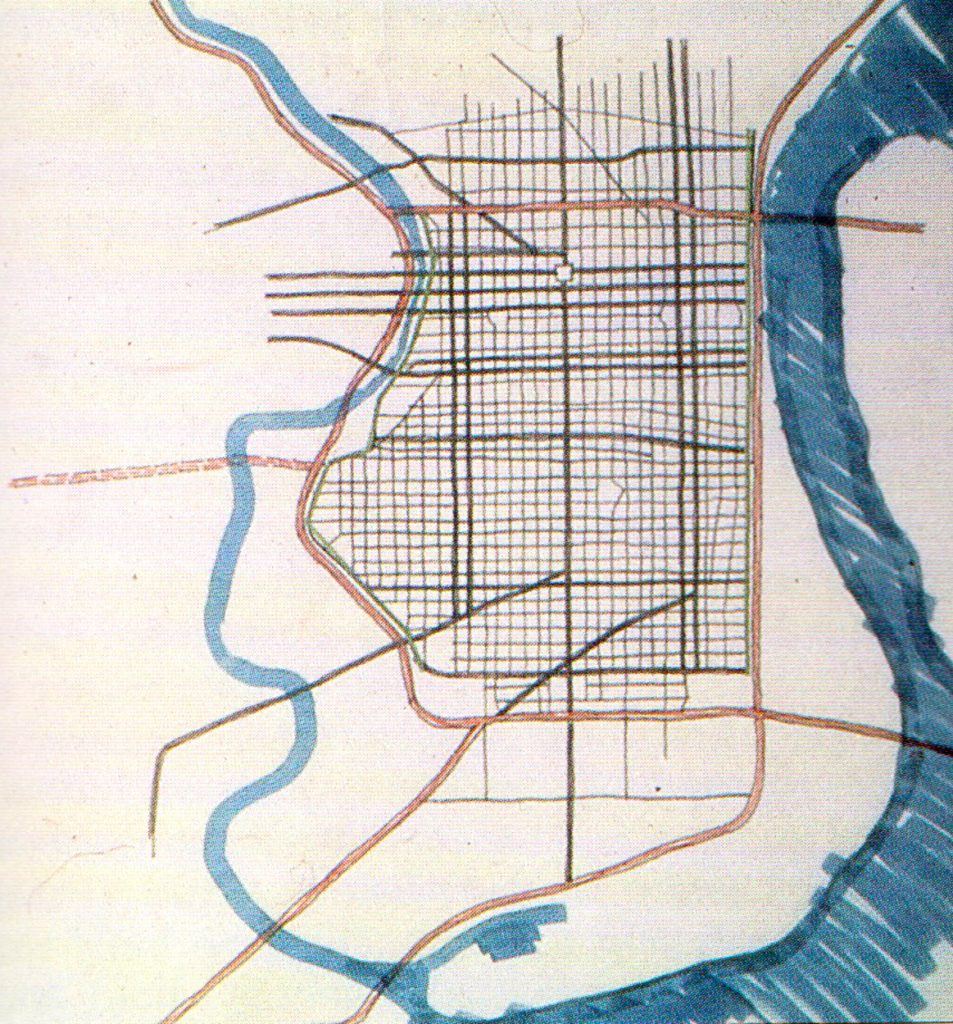
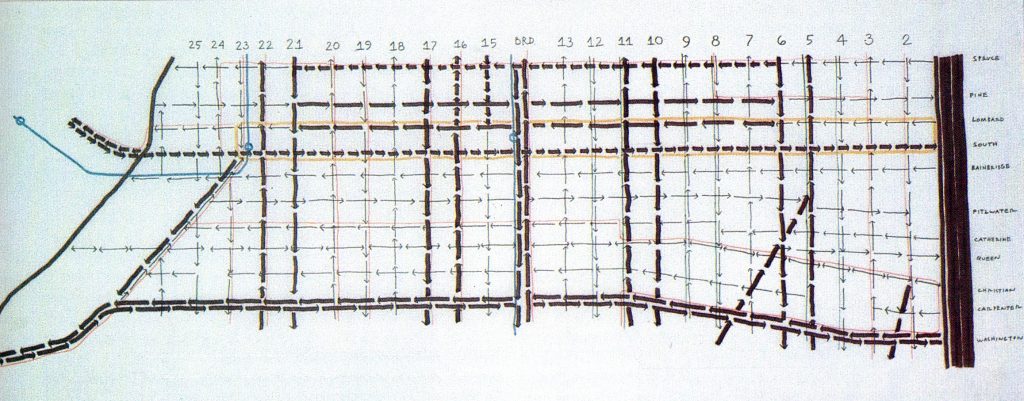
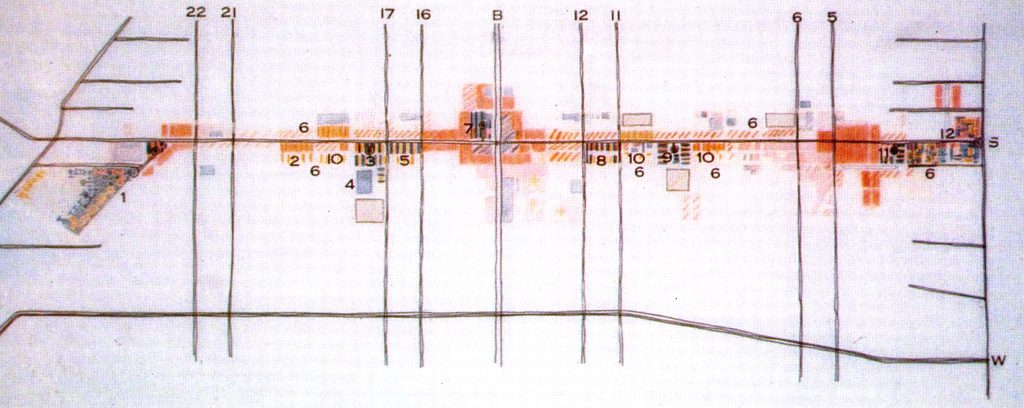
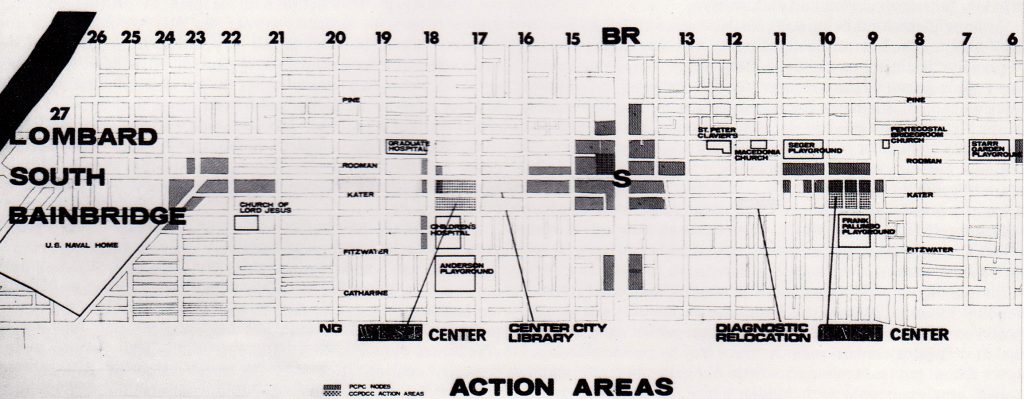
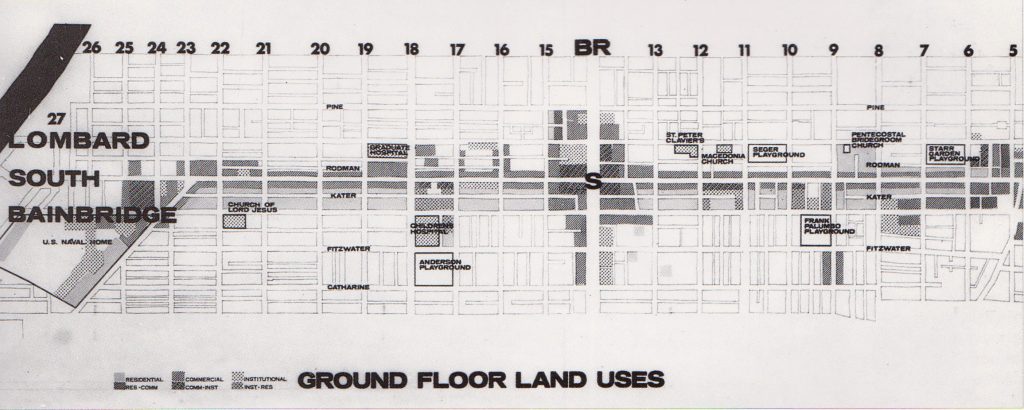


Photographs of South Street (1960’s), by Denise Scott Brown

